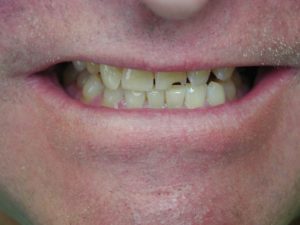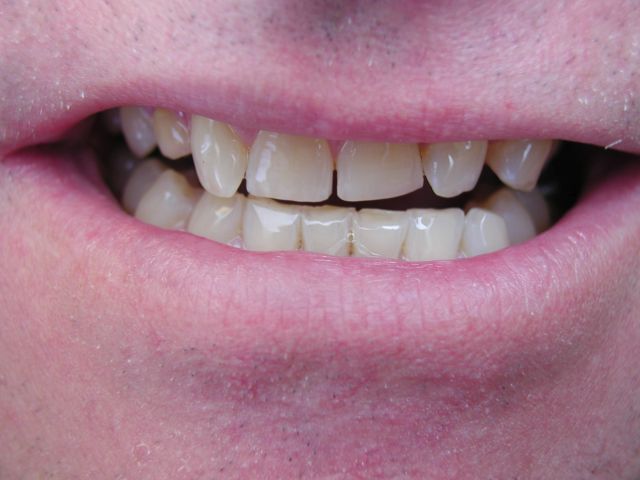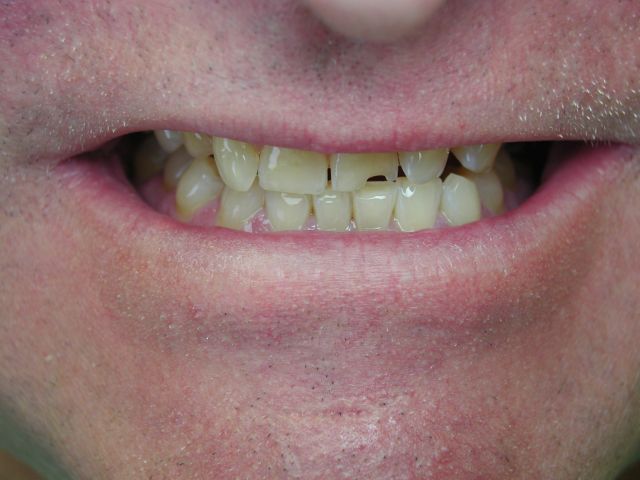 Dental bonding is generally considered a cosmetic dental procedure. The goal of dental bonding is to adhere a tooth-colored material in order to replace missing tooth structure or to add to tooth structure to lengthen or widen. Dental bonding is also referred to as a process of adhering a material to a tooth. This material is generally a plastic type of material in the form of a composite or a sealant.
Dental bonding is generally considered a cosmetic dental procedure. The goal of dental bonding is to adhere a tooth-colored material in order to replace missing tooth structure or to add to tooth structure to lengthen or widen. Dental bonding is also referred to as a process of adhering a material to a tooth. This material is generally a plastic type of material in the form of a composite or a sealant.
One of the most common uses of dental bonding is to repair a broken front tooth. The image to the left displays a portion of a front tooth broken away. Since not much of the tooth is adversely affected we can add a filling material. If more of the tooth was affected we may have recommended either a porcelain veneer or a crown.
The advantage of dental bonding is that it is relatively conservative, very little of the tooth needs to be removed to achieve bonding, it is easily repairable if it breaks away or chips, and it can create a holding pattern for younger patients until they are more mature and can responsibly care for the alternative of a crown or a veneer. In this case dental bonding is significantly less expensive than a porcelain veneer or crown.
 The downside of dental bonding is minimal. Over time these materials may chip or debond. These repairs can be quite well-done; however, the result is dependent upon the skills of the dentist. With veneers or crowns, a dental laboratory technician creates the restoration in the lab, where conditions may be easier to create a better result.
The downside of dental bonding is minimal. Over time these materials may chip or debond. These repairs can be quite well-done; however, the result is dependent upon the skills of the dentist. With veneers or crowns, a dental laboratory technician creates the restoration in the lab, where conditions may be easier to create a better result.
The after image above shows an example of what dental bonding can do. If you are interested in obtaining dental bonding or if you are interested in discussing this we invite you to contact us in any way you see available on this page. We thank you for your interest in this post and in our website.


